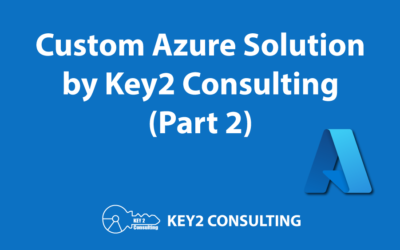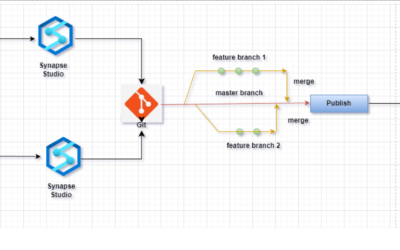By: Brad Lathrop
Are you exploring database options? Considering moving data to the cloud? Work for a company that utilizes a plethora of Microsoft products?
If you answered yes to any of those questions, chances are you may have come across Azure Cosmos DB at some point. But do you know what the product does?
In this article, we explain what Azure Cosmos DB is by taking a look at five key features of the product. Let’s dive in.
What is Azure Cosmos DB?
Azure Cosmos DB (ACDB) is a NoSQL cloud database that provides extremely low latency (the time it takes for data to travel from one place to another) and high data availability.
It is owned by Microsoft and offers open-source APIs and enterprise-grade security, and can supply “single-digit millisecond performance and 99.999% availability” (1).
Five important features of Azure Cosmos DB are:
- Globally Distributed
- Horizontally Scalable
- Schema-Agnostic
- Built-In Security
- Built-In Compliance
Let’s take a closer look at each of these features to better understand what the Microsoft product does.
1. A Globally Distributed Database
First, Azure Cosmos DB’s storage is globally distributed. This means the database can be set up in any of the Microsoft regions worldwide, empowering organizations to make data availability as close as possible to users.
This invaluable coverage is accomplished by Azure’s massive datacenter footprint across the globe, which exists in over 60 regions at the time of this writing. Azure’s global network allows for data to be available nearly always and at lightning-speed. If one datacenter were to crash, there’s certainly another not too far away that can be used to access data.
Check out this Microsoft documentation for more information on global distribution in ACDB.
2. Horizontally Scalable
A second important feature of Azure Cosmos DB is that the database is horizontally scalable, which means users can add nodes and machines to accommodate for demand needs.
Storing, replicating, and managing data in a database creates “loads,” and horizontally-scalable databases are designed to better handle these loads. Better managed loads mean better database performance, which results in better user experience and performance.
For those interested in learning more about scaling in ACDB, check out this article from Microsoft.
3. Schema-Agnostic
A third significant feature of Azure Cosmos DB is that it’s schema-agnostic.
Many databases are bounded by a schema, which is a structure that determines how tables of data interact with each other in a database (known as “relationships”). This is not the case with ACDB, as it is schema-agnostic. This allows users to work on assets (like applications) free of schema restrictions, enhancing freedom and flexibility.
For a more in-depth look at ACDB’s schema-agnostic characteristic, check out this article by Microsoft.
4. Built-In Security
In contrast to securing on-premise technologies and platforms, securing cloud technologies tends to be much easier and more efficient. Azure Cosmos DB is no exception. As a cloud database (and Platform-as-a-Service or PaaS), there is no physical hardware associated with storage, meaning no physical security of the hardware is required.
On top of that, ACDB has world-class security features built right into the product. For example, Microsoft provides service-managed keys that enable the automatic encryption of data stored in an Azure Cosmos account (2).
For a detailed list of security features and processes in ACDB, be sure to check out Microsoft’s official documentation titled, “Security in Azure Cosmos DB – Overview”.
5. Built-In Compliance
Azure Cosmos DB also has world-class compliance features baked right into the product.
“Compliance,” in this context, means that data meets a certain set of rules/standards/laws/regulations. Data compliance is a critical endeavor for most organizations today.
Microsoft is well-aware of this need and has built compliance capabilities in ACDB that fall into four categories:
- Globally applicable
- US Government
- Industry-specific
- Region/country-specific
ACDB’s compliance features cover just about every scenario – features designed for a specific region or country, a specific industry, the United States government, and for the globe.
According to Microsoft documentation titled, “Compliance in Azure Cosmos DB”, Azure “maintains the largest compliance portfolio in the industry both in terms of breadth (total number of compliance offerings) and depth (number of customer-facing services in assessment scope).”
For more information on ACDB’s compliance capabilities, you can download a PDF from Microsoft about the matter here.
Summary
Azure Cosmos DB is an incredibly powerful database for organizations that need to store, replicate, and retrieve large amounts of data at scale.
Microsoft Azure’s immense server coverage across the globe is the magic behind the product, enabling organizations to harness the power of ACDB to place data as close as possible to their users to optimize data availability and speed.
The five key features of Azure Cosmos DB that I outlined in this article are:
- Globally Distributed
- Horizontally Scalable
- Schema-Agnostic
- Built-In Security
- Built-In Compliance
All of these features combine to create a world-class cloud database that continues to grow in popularity.
Sources
1. Microsoft – Azure Cosmos DB
2. Microsoft Documentation – Security in Azure Cosmos DB – overview
Keep Your Data Analytics Knowledge Sharp
Get fresh Key2 content and more delivered right to your inbox!
About Us
Key2 Consulting is a boutique data analytics consultancy that helps business leaders make better business decisions. We are a Microsoft Gold-Certified Partner and are located in Atlanta, Georgia. Learn more here.





